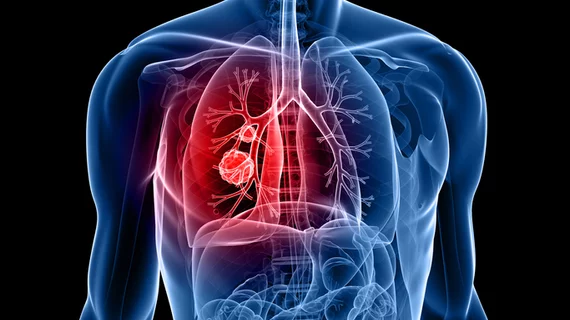Unearthing the factors that influence timely follow-up for incidental lung nodules
A few common factors influence patients or providers to follow up on incidental lung nodules in a timely fashion, according to a study published Thursday in JACR [1].
Older individuals, white patients and those who received primary care at a clinic unaffiliated with a medical center all are more likely to receive untimely follow-up imaging. Same for those whose nodules were identified in the ED or during an inpatient stay, researchers from Tufts University School of Medicine in Boston reported.
Findings from the single-center analysis offer important clues as radiologists and PCPs seek to close the loop on incidental findings.
“To address discrepancies in follow-up adherence, there is an emerging national trend towards the creation of dedicated lung nodule clinics,” Benjamin York, MD, and co-authors wrote March 15. “Examining factors that may lead to suboptimal patient follow-up is invaluable to determine if such clinics are necessary, as well as to inform patient retention strategy at existing clinics.”
Researchers conducted the retrospective study using data from a 415-bed, tertiary care academic medical center. They queried the radiologic database with the phrase “Fleischner Society Guidelines,” including scans performed between 2018-2019, with a follow-up period spanning to March 2021. The search unearthed a total of nearly 300 patients who met the study criteria.
York et al. found that nearly 73% of patients in the study followed up on their incidental findings in an “untimely” fashion, based on Fleischner Society guidelines. That’s compared to more than 26% who did follow through in an ideal timeframe. Of those who received “at least some” follow-up care, 41% went on to have full timely surveillance, ending their treatment either in nodule stability or the end of the study period, the authors noted. About 26% of this group received at least “partial” follow-up (first scan on time, but subsequent ones were late or missed), while 33% saw a “late” follow-up (first scan performed late, regardless of timeliness of subsequent imaging), and 58% didn’t receive any recommended follow-up on their lung nodule.
During the entire study period, providers performed just five biopsies, diagnosing four cases of lung cancer. Three of those were among patients who did receive timely follow up, and one occurred in an individual who did not. These included one case diagnosed at the first follow-up appointment, two at the second instance and another at the third follow-up.
Data such as this can help providers to best tailor their strategy to address incidental lung findings, the authors advised.
“While the study is confined to a single, medium-sized academic medical center limiting sample size, our study can serve as a useful model for similar institutions to investigate the unique social determinants of health that affect lung nodule follow-up in their communities,” York and co-authors wrote.

